
Purchase Tickets
Under the Expressway: Lost Barrio of Indianapolis, Part II
July 11, 2023
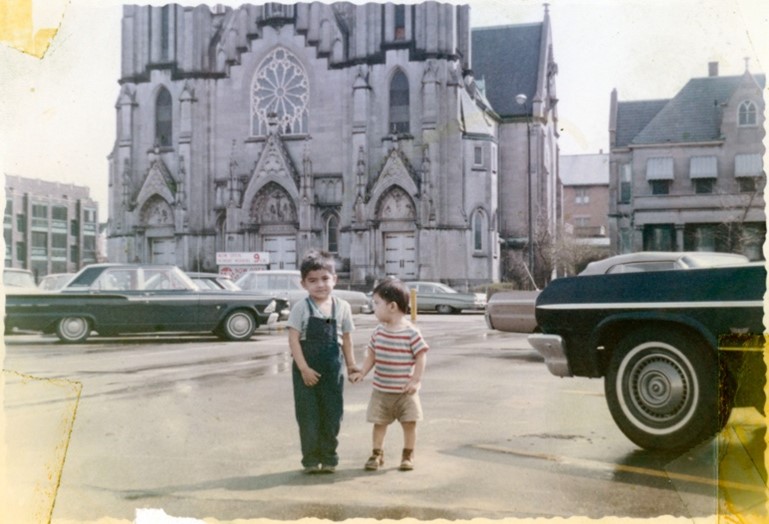
In March 2020, I wrote a blog about a story concept that had been brewing for a while, “The Lost Barrio of Indianapolis.” Since that time, I have continued to develop a deeper understanding of what it was like to live in this area. Most importantly, El Barrio’s influence on existing places in downtown Indianapolis, places you presently would not associate with the Latino community, but at one time existed as Latino spaces, where the community lived, worked, learned, worshiped and where children played.
There had always been an understanding that this community existed, but it was without a defined geographic area or name. This is evidenced by an excerpt from a 1990 interview transcript of Monica Medina, who was the Executive Director of the Hispano-American Service Center (AKA The Hispanic Center or El Centro Hispano) in Indianapolis. Charles Guthrie of the University of Indianapolis interviewed 10 long time Indianapolis residents and emerging leaders.
Guthrie: Do you know anything at all about the neighborhoods?
Monica: Only what I hear from Rolando who is a good friend, and that there was a small community here, and before the expressway, they were all, I guess they all lived on this part of the city…
[Excerpt] Hispanic Indianapolis: Personal Histories from an Emerging Community Oral History Project, 1990, BV 3516-3525
Guthrie assumed that Indianapolis had an “emerging community” as noted in the title of his oral history project. Since the late 19th century, a small number of Latinos and Hispanics have called Indianapolis home, illustrated by National Origin numbers on the U.S. Census and later in 1907 when Russell B. Harrison of Indianapolis was appointed as (honorary) vice consul of Mexico, by Mexican President General Porfirio Diaz. The Consular office was in the Newton Claypool building that once stood at the corner of Ohio and Pennsylvania Street, now where the Salesforce Tower is located. National Origin numbers only account for those who were born in a foreign country, rendering American-born Latinos and Hispanics statistically invisible. At that time in Indianapolis, there was no neighborhood or El Barrio where the early Latino community could grow and flourish. Some lived among other ethnic communities or did not stay in Indianapolis. They were merchants, workers, or students. A small number were young men from Mexico’s wealthy families, sent to Indianapolis to attend local medical schools.
Where They Lived: Geographic Location of the Lost Barrio
My research led me to define geographic boundaries of the El Barrio as North Street to the north, Market Street to the south, Pine Street to the east, and Davidson Street to the west. The east-to-west cross streets were Michigan, Vermont, and Ohio. Sanborn and Baist Atlas maps illustrate that over 160 dwellings existed: single-family homes, double units, and a small 4-unit apartment building. Roughly a dozen Mexican and Mexican-American families lived in El Barrio, surrounded by other ethnicities. The earliest family to settle just outside El Barrio was Francisca “Panchita” and Gabino Mendez and their children, around 1930. The Mendez’s show up on the 1930 census, housing two Mexican boarders, Cristobal and Guadalupe Garcia. The Mendez family later lived in El Barrio on Pine Street.
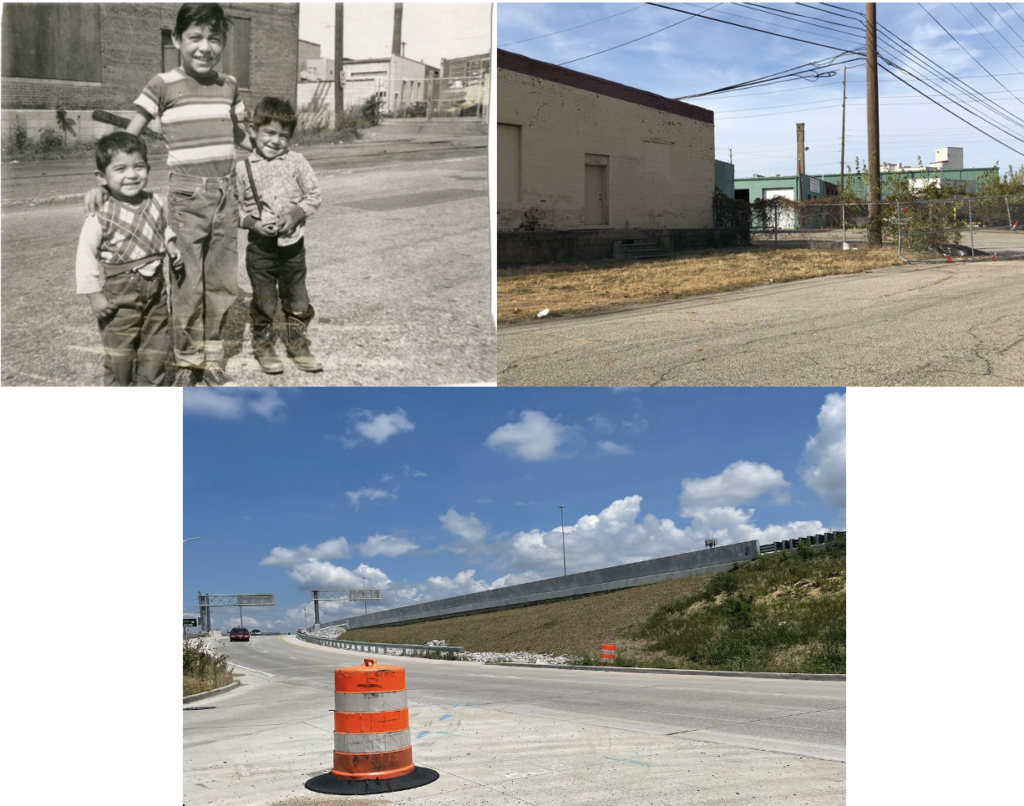
Top Left: Quintana Brothers on Davidson Street. ca. 1950s, Maria Quintana, IHS
Top Right: Davidson and North Street, (looking west) October 2020, Photo courtesy of the author
Bottom: Intersection of Davidson and North (looking east), July 2023, Photo courtesy of the author
Where they Worked: Pine and Market Streets
While many of the men worked in various industries in the city, many worked for the Indianapolis Union Railway. Some of the early families, namely the Riojas and Espinoza families, first lived on Market Street. The men found work at Zaph’s Restaurant, near the corner of Pine and Market Streets. Zaph’s was short for Zaphiriou, the last name of its proprietor, a Greek immigrant named Stamatis John Zaphiriou.
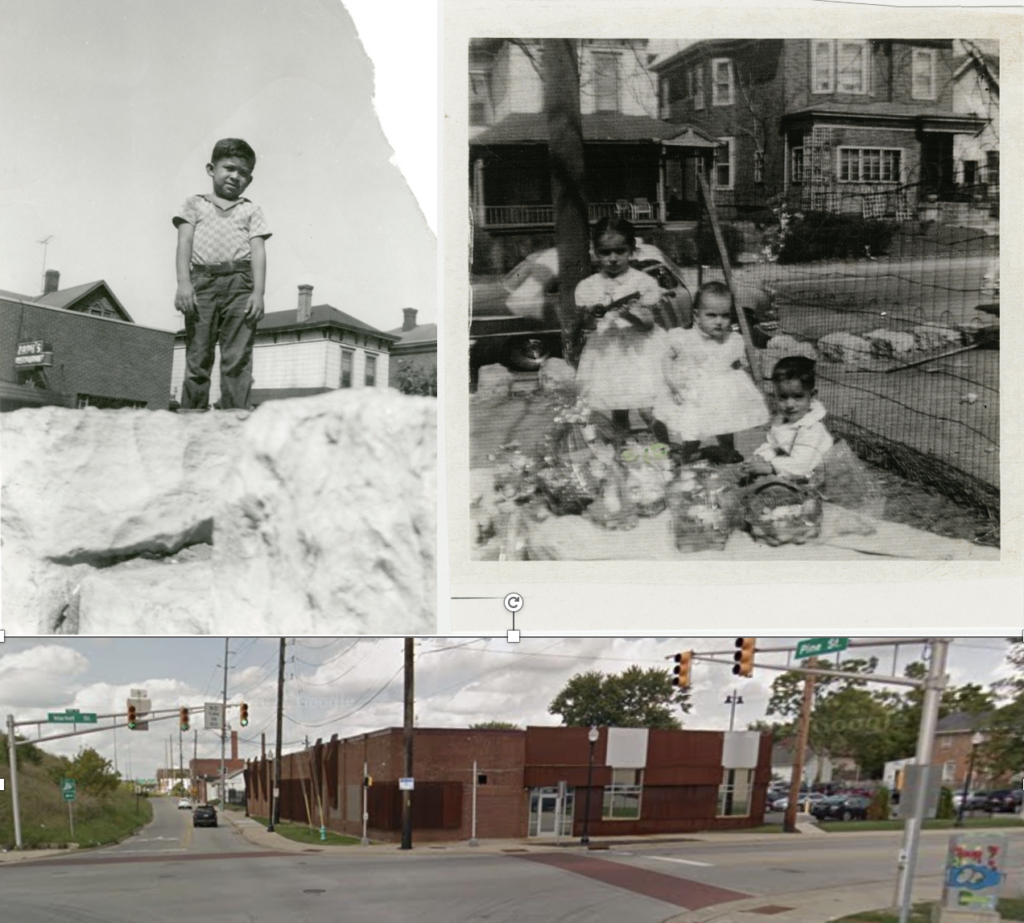
Top Left: Jesse Quintana Jr. standing in front of Zaph’s Restaurant,1950s, Maria Quintana, IHS;
Top Right: Espinoza Children on Easter at their Market Street Home,1950s Connie Hamm, IHS;
Bottom: Market & Pine Street, Former Location of Zaph’s Restaurant, September 2016, Google Maps
Where they Worshiped: 317 N. New Jersey Street
A 10–12-minute walk or a half mile outside of the El Barrio was St. Mary of the Immaculate Conception Roman Catholic Church. Not all Latinos and Hispanics are Roman Catholic or of a particular religious background, but for those who were worshipped at St. Mary’s Catholic Church on New Jersey and Vermont Streets. St. Mary’s was one of the earliest Roman Catholic churches in Indianapolis to offer mass in Spanish. The neighboring building, The Marian Center, served as the location of the Hispanic Education Center in the 1980s.

The Quintana Brothers Standing in front of St. Mary’s Catholic Church, 1950s, Maria Quintana, Indiana Historical Society
Where they Gathered: 617 E. North Street and 620 N. East Street
In 1969, Feliciano “Felix” Espinoza, Fred Bowman, Tony Dominguez and Tulio Guldner organized the Hispano-American Association in response to the growing Latino community. While this was not the first Latino social or cultural organization in Indianapolis, it was the organization that later became the Hispano-American Multiservice Center in 1971, with its home at 617 E. North Street. It was only .2 miles (4 min walk) from the northern boundary of El Barrio. It served as The Hispano Center’s home until the early 2000s, later joining the organizational umbrella now known as La Plaza, Inc. This center was in some ways a neighborhood center, but mostly served as a human and social services organization. Many early Latino-focused organizations were aided by this center, through technical support or otherwise. The building still exists behind St. Joseph’s Brewery and presently is known as an event space, Historic St. Joseph Hall.
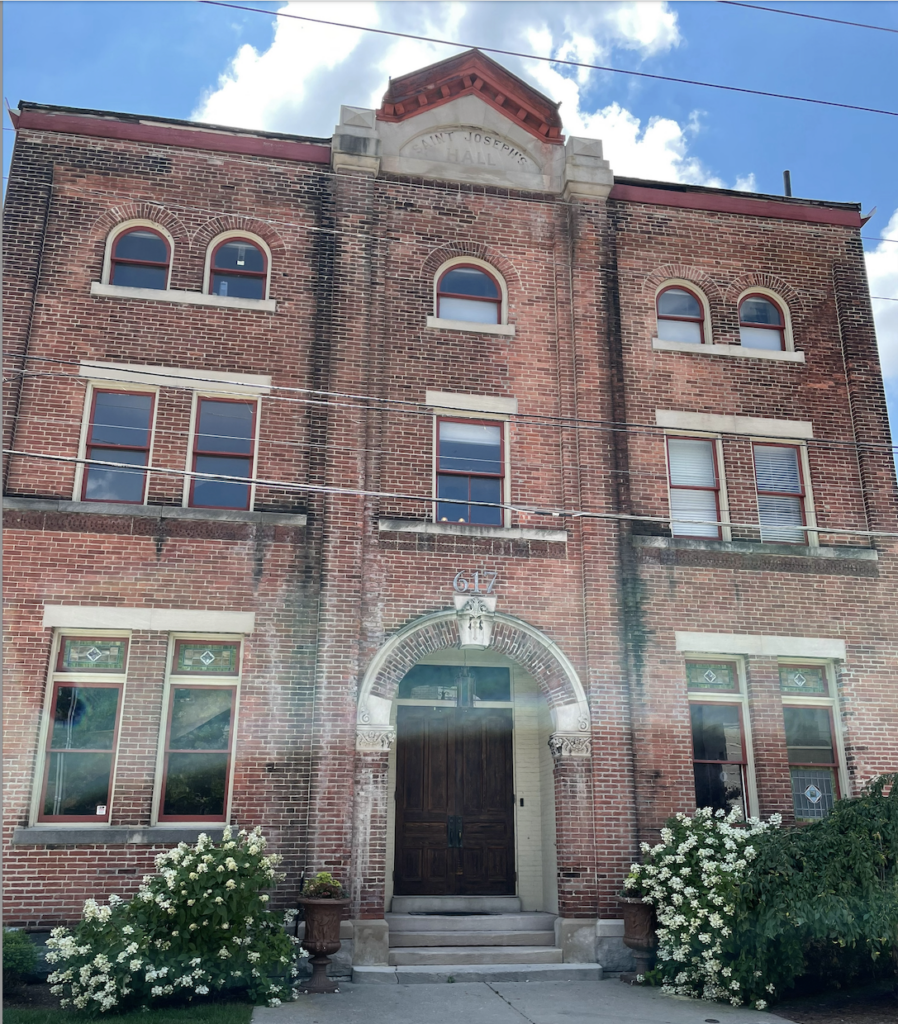
First location for the Hispano-American Multiservice Center, Historic St. Joseph’s Hall, St. Joseph Brewery, July 2023. Photo courtesy of the author
Another location where the residents convened was at 620 N. East Street in the Bricklayers, Masons & Tile Setters Union Hall, also known as the Trowel Trades building. This was .4 miles away (9 min walk) from El Barrio. At the Trowel Trades building, a local social club called Club de la Amistad, hosted events with live entertainment, mostly Mexican or Mexican-American bands and performers from around the state. Likely someone who worked in the trowel trades helped secure the rental of this venue. Club members and their children would sell food to help cover costs for the event. Today that location is known as Union 50 Restaurant.
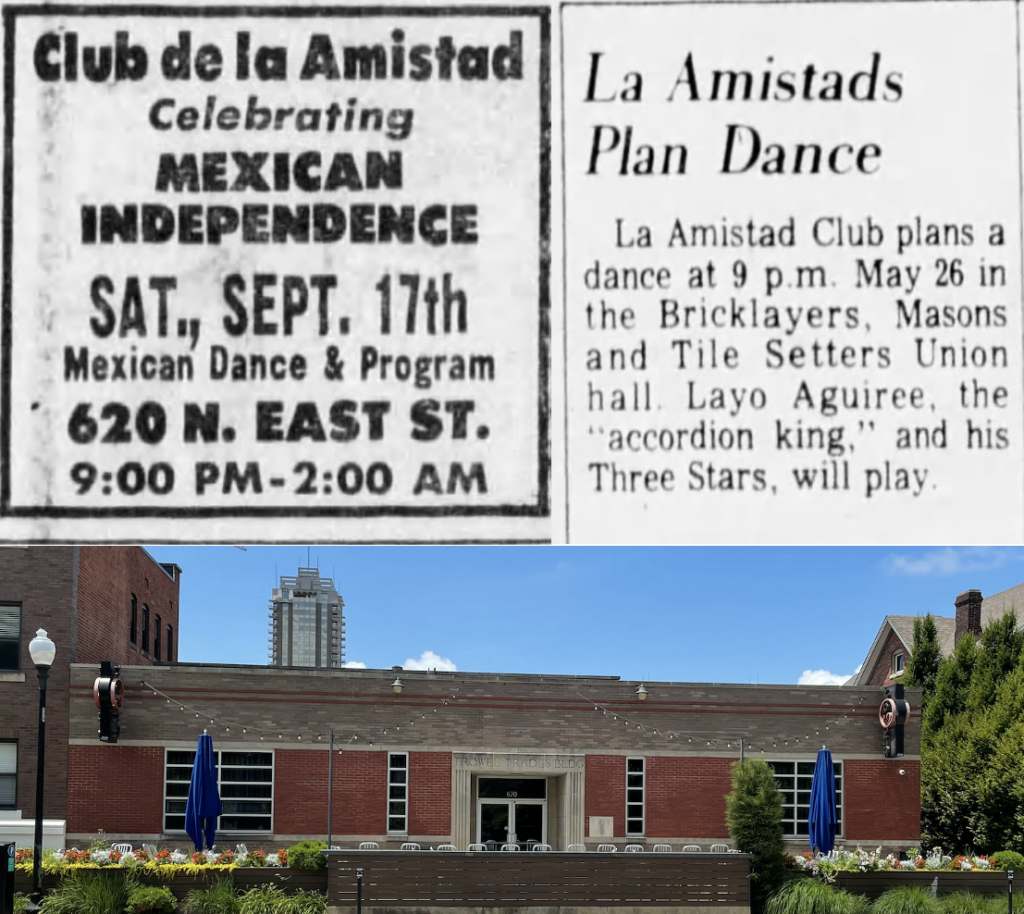
Top Left: Club de la Amistad Mexican Independence Day Dance Advertisement, Indianapolis Star,
September 17, 1977. Top Right: Dance Advertisement, noting performer Layo Aguiree [Lalo Aguirre] “The Accordion King” and his Three Stars, Indianapolis Star, May 12, 1979. Bottom: Trowel Trades Building, Union 50 Restaurant, July 2023, Photo courtesy of the author
Where they Played/Learned: 470 Fulton Street
One block west from the Western border of El Barrio was Indianapolis Public School No.9 (Clemmons Vonnegut School). Most of the children from El Barrio went to this elementary school, which is the present location for Young and Laramore Advertising Agency. Many would later attend nearby Arsenal Tech High School.
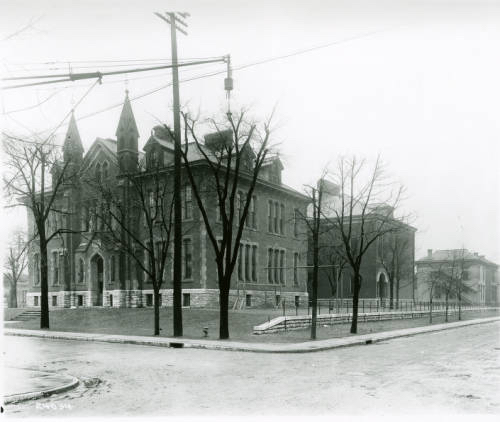
Public School no. 9, 1910, Clemens Vonnegut (Bass #24034) W.H. Bass Photo Company Collection, P0130, Indiana Historical Society
El Barrio was a small community filled with families, many without extended family and so the neighborhood functioned as one large family. Neighbors looked out for each other, fed each other, and gathered on weekends. While it may no longer physically exist, its memory continues to thrive in the places it influenced and in the memories of those who once called this place home.
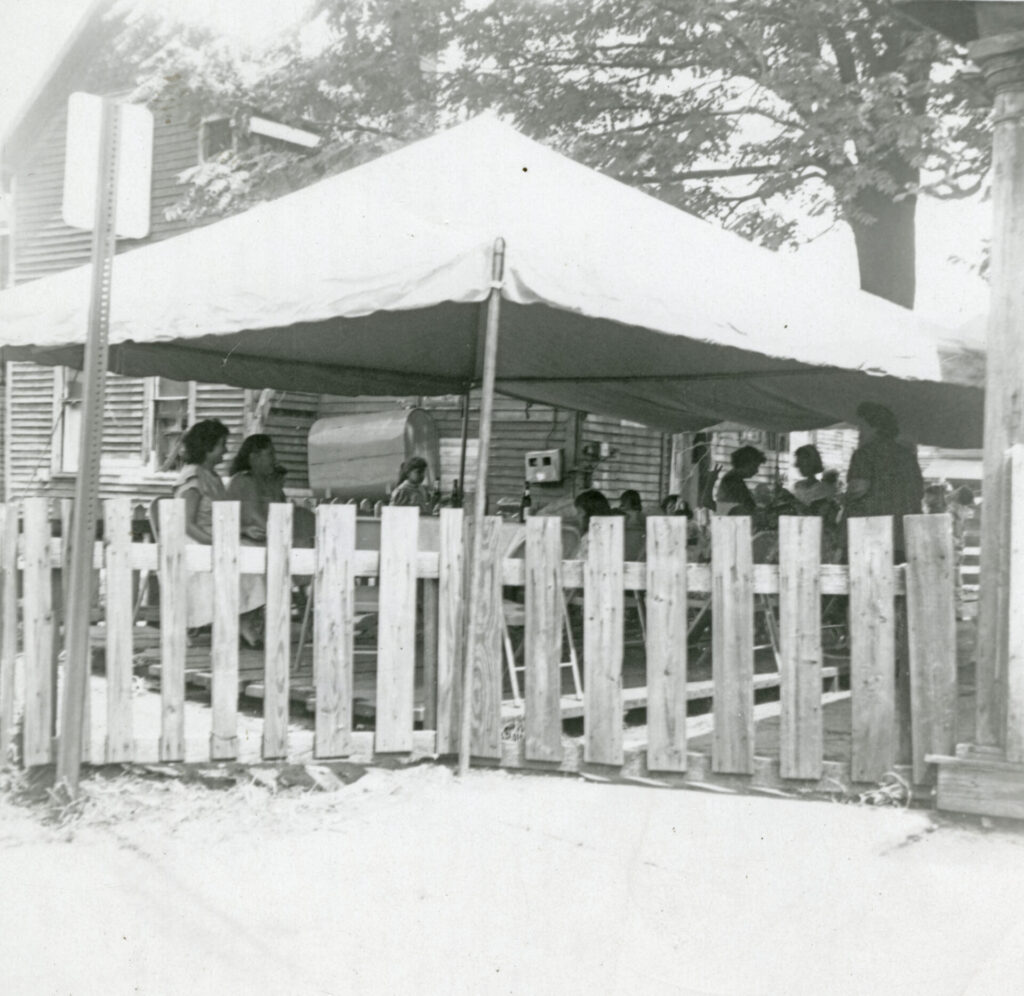
A neighborhood gathering, 1950s,
Maria Quintana, IHS.
Special thanks to the Espinoza, Quintana, and Riojas families for their contributions to Indianapolis and Indiana History. If you lived in El Barrio, I’d love to hear from you.








